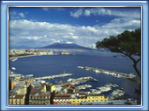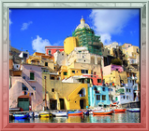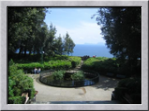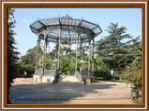Natural beauty - RNA - Residenze Napoli Ateliers
Main menu
- Home
- Apartments
- Prices
- Availability
-
Naples Art
- The works
-
Where we are
- A little history
- The life of Celentano
- How find us
- Contacts
- Links
- Naples News
Natural beauty
THE SEA AND SURROUNDING…
The Gulf of Naples is a natural bay that has attracted visitors since the first Greek colonists settled in the island of Pithecusa (now Ischia) then Neapolis founded the new city.
The island of Ischia belongs to the archipelago of volcanic islands. Located at the northern end of the Gulf of Naples and a short distance from the islands of Procida and Vivara, is the largest of Flegrean. It is a large tourist attraction for its beaches, its crystal clear sea and its thermal characteristics.
The island of Capri with its sights to see and where nature, myth and beauty meet. Belvedere hanging over the sea, roads clinging to the rock and old fishing villages for a walk through the most beautiful views of the island.
The island of Procida is part of the Pelagie Islands, which lie at the heart of the Gulf of Naples. The only town is Procida island, which extends throughout the entire island and partly on the nearby islet of Vivara, which is accessed via a bridge. Island of volcanic origin, has in part low and sandy coasts, and partly high and uneven.
The Sorrento Peninsula extending into the Italian Tyrrhenian Sea and a major tourist destination belonging to Campania. On the side facing the Bay of Naples is the Sorrento coast, while the side facing the Gulf of Salerno as the Amalfi coast. Sorrento is the ideal base for exploring the beauty and wonders of the Amalfi Coast and Gulf of Naples. Perched on the southern peninsula of Sorrento, the Amalfi Coast is one of the most beautiful seaside destinations of Campania.
WALKING ON THE GREEN…
The Bosco di Capodimonte covers an area of 1,340,000 m² and looks like a forest interspersed with large meadows, valleys crossed by small streams and areas rich in quarries is typical of Neapolitan hills. The area adjacent to the Museum of Capodimonte contained within it is characterized by wide lawns with various plant species.
The Park Floridiana is a complex formed by a large green park and a villa that houses the National Museum of Ceramics Duke of Martina, situated on the southern boundary of the Vomero hill, is open every day from dawn to dusk It offers a magnificent panorama of the Bay of Naples. There are two entrances, located respectively in Via Cimarosa and Via Aniello Falcone.
The Royal Botanical Gardens was founded in 1807 in an area at the foot of the Capodimonte hill, opposite the Royal Hotel of the Poor, and today it is a university, the Faculty of Mathematical, Physical and Natural Sciences, and is certainly the most important in Italy by the number and quality of the species present.
The Virgilian Park (also known as Remembrance Park) is a scenic park, located in the Posillipo district, characterized by a system of terraces overlooking the Bay giving visitors the chance to enjoy a panorama that includes the major wonders of the Gulf of Naples otherwise impossible to see other sights in the city.
The Villa Comunale (formerly Royal and national), between the Riviera di Chiaia and Via Caracciolo, is a major historical gardens of Naples. His first group was in 1697. In 1778-
The Astroni Park is located in the crater of an extinct volcano that is part of the complex crater of Agnano, inserted in the volcanic area of Campi Flegrei. The most superb forest of oak trees on the walls of an ancient crater. Thus Goethe called in 1787 the forest Astroni, whose landscape ¬ The advantage is almost unchanged, as can be seen today, from the tower entrance.
The National Park of Vesuvius, of great historical and geological interest, was established to protect the values of the area, to apply appropriate methods to achieve proper integration between man and environment, to promote environmental education and scientific research. The park was established, however, also need to defend the world's most famous volcano: Mount Vesuvius.












